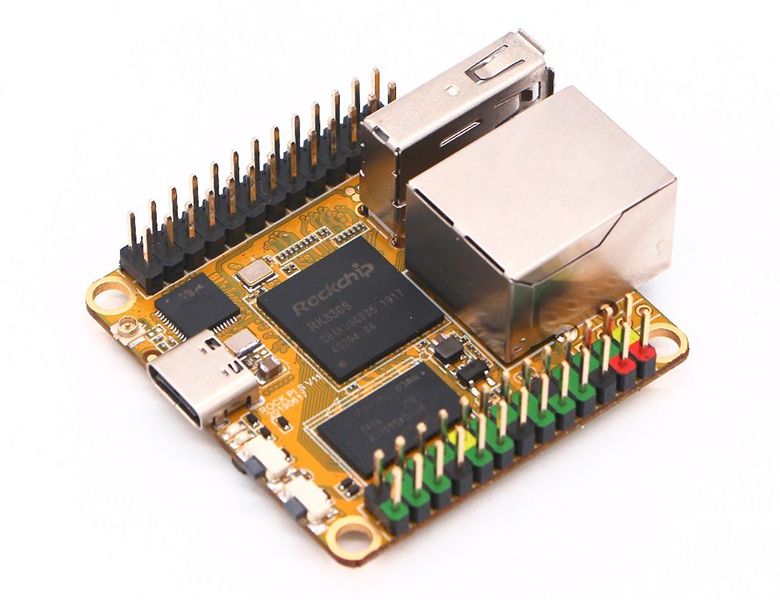
Rock Pi S by Radxa Limited
S is for Small Square.
ROCK Pi S is a Rockchip RK3308 based SBC(Single Board Computer) by Radxa. It equips a 64bits quad core processor, USB, ethernet, wireless connectivity and voice detection engine at the size of 1.7 inch, make it perfect for IoT and voice applications. ROCK Pi S comes in two ram sizes 256MB or 512MB DDR3, and uses uSD card for OS and storage. Optionally, ROCK Pi S can provide on board storage version with 1Gb/2Gb/4Gb/8Gb NAND flash.
The Rockchip RK3308 Soc used in ROCK Pi S RK3308 is a high-performance Quad-core application processor designed for intelligent voice interaction, audio input/output processing, and other digital multimedia applications. Embedded rich audio interfaces, such as I2S, PCM, TDM, PDM, SPDIF, HDMI ARC and so on, can meet different audio application development, reduce hardware development complexity and development cost.
- Quad-core ARM Cortex-A35CPU
- Full implementation of the ARM architecture v8-A instruction set
- ARM Neon Advanced SIMD (single instruction, multiple data) support for accelerated media and signal processing computation
- ARMv8 Cryptography Extensions
- In-order pipeline with symmetric dual-issue of most instructions
- 256KB unified system L2 cache
- Includes VFP v3 hardware to support single and double-precision operations
- Integrated 32KB L1 instruction cache, 32KB L1 data cache with 4-way set associative TrustZone technology support
Purchase
Contribute
Have some info to add for this board? Edit the source for this page here.
Adafruit Blinka Installation
We use a special library called adafruit_blinka (named after Blinka, the CircuitPython mascot) to provide the layer that translates the CircuitPython hardware API to whatever library the Linux board provides.
For example, on Raspberry Pi we use the python RPi.GPIO library. For any I2C interfacing we'll use ioctl messages to the /dev/i2c device. For SPI we'll use the spidev python library, etc. These details don't matter so much because they all happen underneath the adafruit_blinka layer.
